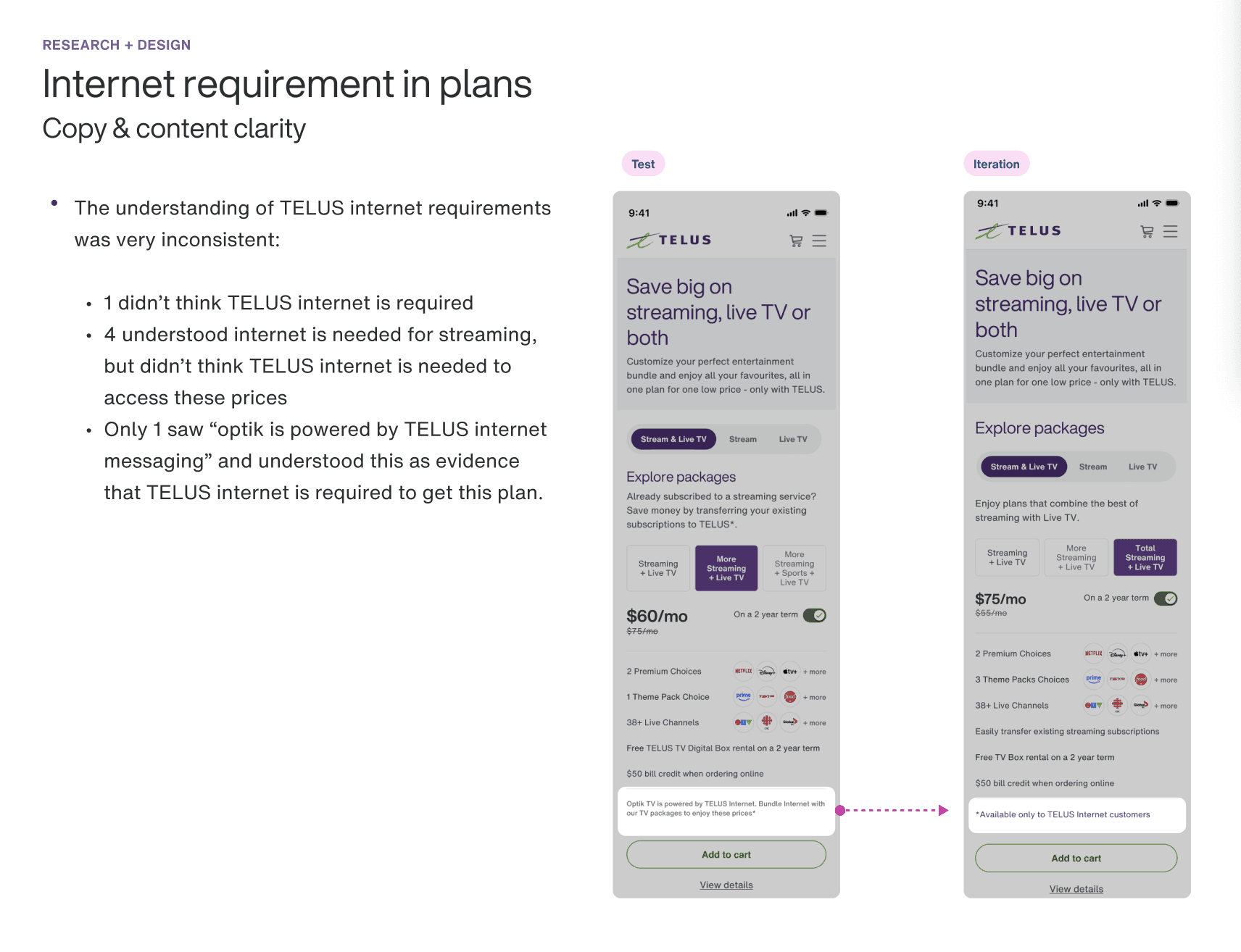Telus
Optik TV: Foundational Regional Launch (V2)
Industry
Telecom
Year
2024
company
Telus
The Optik TV plans page needed a modern refresh to better showcase TELUS' full entertainment offerings. With streaming services reshaping how people consume content, integrating them into plan options was essential to meet customer expectations. Additionally, self-serve capabilities were optimized to enable a seamless online purchase experience. This project was a strategic priority, aligning with TELUS' entertainment growth plans for late 2024 and 2025.
Role: Lead UX Designer
Team: Design, Content. Product, Engineering, Marketing
Timeline: June–Oct 2024
Platform: Web (desktop & mobile)
Problem
The original Optik TV plans page had a high drop-off rate during the selection process, resulting in fewer online sign-ups than forecasted. User behavior data showed confusion around plan options, unclear pricing, and hidden requirements, such as needing TELUS internet to qualify for packages. These friction points created uncertainty and caused users to abandon the flow. We set out to simplify decision-making, clarify pricing and create a more intuitive, mobile-optimized experience that would increase engagement and conversion.
Challenges & Goals
Challenges | Goals |
|---|---|
|
|
Research & Competitive Analysis
We benchmarked Canadian competitors like Bell and Rogers and interviewed internal stakeholders and customers to surface real user pain points.
Bell enables full online purchases, unlike Rogers’ reliance on phone/live chat.
Netflix and Disney+ prioritize mobile simplicity, reducing cognitive load in plan selection.
Customer pain points in Telus’ previous flow included unclear pricing, lack of plan comparison, and hidden requirements (e.g., needing Telus internet for Optik TV).


Design Process
Wireframing & Prototyping
We created multiple wireframes and refined them through collaboration with content, marketing, and product teams. Designs prioritized a mobile-first approach, ensuring that elements weren’t simply scaled down from desktop but optimized for usability.

User Testing & Key Insights
We conducted usability tests on high-fidelity prototypes across desktop and mobile. Key findings led to impactful changes:
Clarified pricing terms (e.g., rewording “2-year price guarantee” to “pricing on a 2-year term”).
Made internet requirement explicit to prevent confusion.
Reduced vertical height of plan cards for better mobile readability.
Improved navigation between plan tabs for easier comparison.


Outcome & Impact
Over 62,000 visits to the new page since launch
Cart visit rates remained consistent at 3.3% vs old page
Order conversion rates peaked at 1% in Mar 2025
Reflections
This project reinforced the value of putting user needs at the forefront, even when navigating evolving business priorities. Through usability testing and content clarity advocacy, we delivered a solution that directly addressed real customer confusion by moving beyond stakeholder assumptions to drive measurable improvements.
Since launch, we’ve continued to evolve the experience based on A/B test results and real usage data, leading to a refined V3 that further improves plan comparison, navigation, and responsiveness. We’re now working to scale the experience nationally, with a focus on aligning the page with broader information architecture improvements across TELUS’ entertainment ecosystem. This ongoing work highlights the importance of designing not just for launch, but for long-term adaptability and impact.
